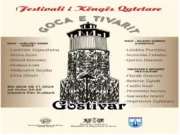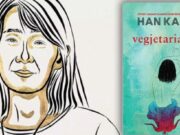In his latest novel, Ismail Kadare examines the line between death and life, and between the individual and the state.
By JOSEPHINE LIVINGSTONE
Ismail Kadare is by far the most successful Albanian writer, living or dead. The majority of significant post-war Albanian literature is in the socialist realist mode, as in the stifled novels of Serjo Spasse. While common sense says that no artist can overhaul a country’s literature singlehandedly, Kadare has done so. From his first novel, The General of the Dead Army, in 1963, Kadare has taken as his artistic object the whole of Albanian society. He draws upon myth and classical topoi and religion—Albania was the first country to legally secularize, in 1912—while focusing lovingly, melancholically, on the human experience of totalitarianism.
Those dual investments, the human and the state, hang in paradoxical tension, and that paradox is the core of Kadare. Almost literally: Kadare was born in the city of Gjirokastër, the inspiration for 1971’s Chronicle in Stone, just up the road from longtime communist dictator Enver Hoxha. In A Girl in Exile: Requiem for Linda B., his most recent novel to be translated into English, the totalitarian state fuses with death itself, complicating our understanding of what it means to mourn and remember.
The novel opens with investigators summoning a Tirana playwright, Rudian Stefa, to a meeting. The Albanian authorities dislike his works and he is worried. One of his plays is under review by the censors. He has also recently had an argument with his girlfriend—not his partner, who is away, but a young woman named Migena—in which he grabbed her by the hair and hit her head against his bookcase. Several books fell to the ground and he sees their covers staring up at him accusingly still. Is she an informant? Is that why he is here?
The structure of the novel is like a gigantic black circle: an eclipsed moon. Stefa is our protagonist but he does not know what is happening to him, or why. Little by little, light peeks out around its edges. The investigators ask what he knows about the girl. But they’re talking about different girls, it turns out: A young girl somewhere else in the country has committed suicide and written extensively about Stefa in her diary. She also owns a copy of his book, inscribed to her by name: for Linda B. Stefa knows no Linda B. but it turns out that Migena does. What does Migena know? And why will she only cry, not talk?
The politically inflected scenes in Stefa’s plays mirror the way Kadare writes his novels. The play under review with the authorities is considered potentially dangerous because it contains a ghost. Ghosts are not permitted by the regime because they are supernatural, and therefore not realist. Linda B., of course, is a ghost in this novel, and she is not permitted into the story because Kadare has not created a magical world. Nonetheless, the ghost persists in both Stefa’s play and in A Girl in Exile.
The figure of the ghost represents not only the veil of ignorance that separates the living from the dead, but also the individual from the totalitarian state. Linda B., we eventually learn, was part of an interned family living under a kind of house arrest, not allowed to leave their small town. Her ghosthood compromises both the oblivion of death and the rural exile imposed upon her by the state. Indeed, in the novel, the internment itself applies to the dead as well as the living: Until the order was lifted, the dead could not be moved from the prescribed graveyard.
As Stefa muses on his play, he decides to change what a ghost can do on stage. “No dramatist had dared to make such an alteration to the figure of the ghost in thousands of years.” The change is not superficial, “like making the ghost half vaporous and half real, or putting him in a dinner jacket and a gas mask,” but instead a kind of splitting. The ghost will become “a being or device not simply in possession of two minds or programmed in two ways, but with two ways of relating to others.”
In one scene of Stefa’s play, a commission interrogates a man who shot a partisan. Here, when “the body of the partisan on the bank of the marsh stood up and turned into a ghost, the ghost’s conversation with the commission would be inaudible to the man who killed him, and the words he exchanged with his killer would not be heard by the commission.” Kadare’s ghost may sit on the line between death and life, and between the person and the regime, but it is not a reliable translator. Instead, the ghost speaks past its listeners, and says different things to different people. It haunts the living and tells the truth, but it does not speak clearly.
A Girl in Exile is the work of a historic talent who is still at the peak of his power. It confirms Kadare to be the best writer at work today who remembers—almost aggressively so, refusing to forget—European totalitarianism. Kadare tackles Albania’s specific strangeness with a ferocious rigor that would feel scientific if it were not for the haunted, haunting humans he writes into being. Albania is a different country now, but the way it exists for Kadare will continue to exist as long as he writes. Ghosts do not die.

















